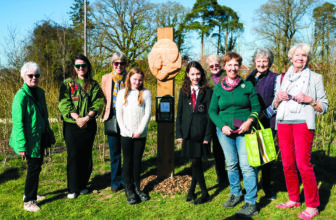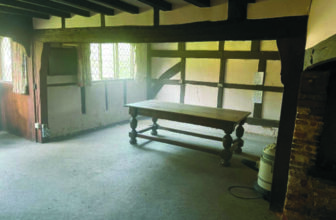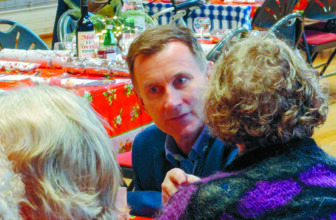
by Trevor Dale
This month, whilst we’re waiting on the outcome of our grant application we’re continuing the exploration of the history of the Old Hospital Cottage.
It is enlightening to read around the subject and the excellent book by Dr Meyrick Emrys-Roberts entitled ‘The Cottage Hospitals 1859-1990’ is an invaluable source. Note the date – 1859, which refers of course to the inauguration of Cranley (as it then was) cottage hospital. Much of the contemporaneous detail we can find comes from the Handy Book of Cottage Hospitals by Horace Swete published in 1870.
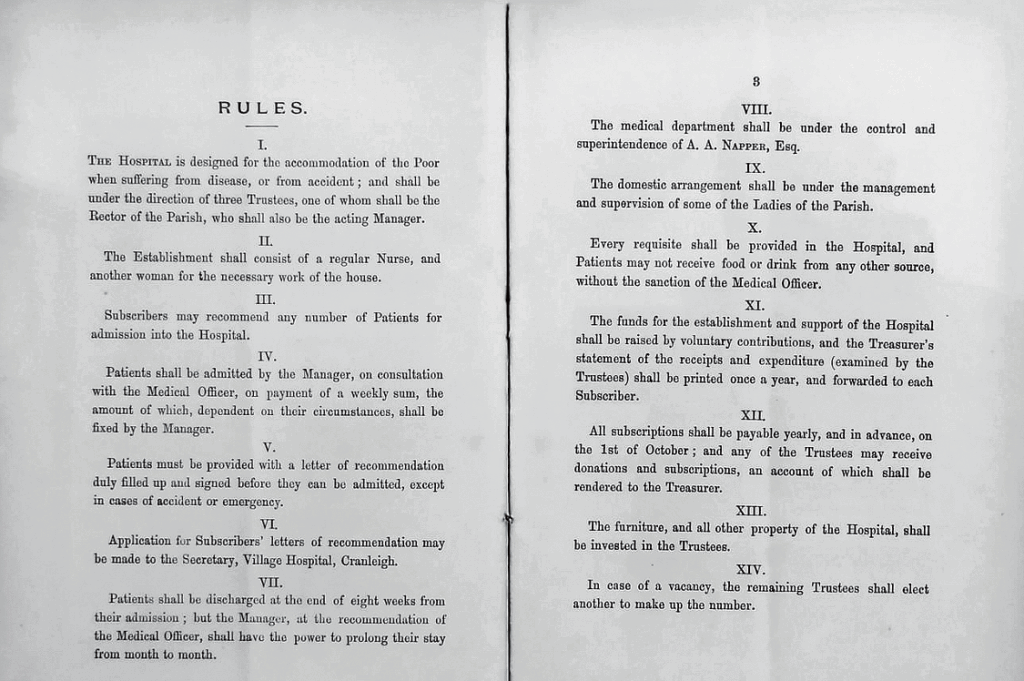
This image, kindly provided by Cranleigh History Society, shows the guiding principles or ‘rules’ for the running of the hospital and was published in the hospital’s annual report of 1879.
As mentioned in previous articles, the cottage hospital was funded by donations from those who could afford it. This enabled the poor to receive treatment free at point of provision in a local facility. Annual subscriptions in the late 1870s totalled around £1,900. However, not all donations received were money as can be seen from this excerpt from the annual report which also shows 25 patients being treated at the hospital in 1878 compared to 30 in 1877.
The above list from Cranleigh History Society archives gives an interesting insight to the types of illness and injury treated at the hospital in 1878. Some familiar diagnoses, some less so!
As you can see, Dr Napper referred to himself as ‘honorary surgeon’, and rightly so, as surgery was a necessary skill when the nearest hospital was virtually unreachable by virtue of distance and no usable roads. Serious accidents were becoming more prevalent with the canals and railways being built with associated dangerous machinery coming on to farms and quarries and gravel pits in the nearby hills. It is also of interest to note the various parishes from which patients came – some quite a distance from Cranleigh, such as Witley, Northchapel and Plaistow.
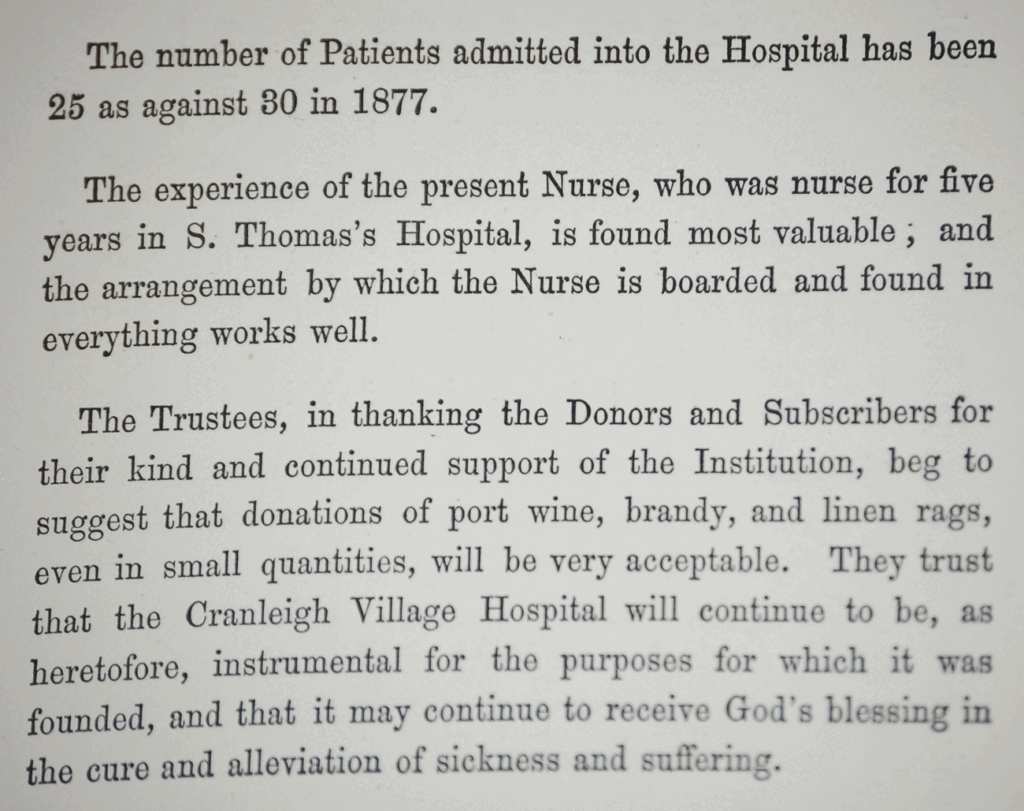
Dr Napper and the Revd Sapte had been in discussion for a considerable period about the merits of treating the poor people of the then remote village in a safe place. Customarily farm workers would have been cared for by their own family in unsuitable conditions in their own homes. Sanitation as we know it was unheard of and it is likely everyone would have slept in one room, most on the floor, with the sick occupying the only bed with infection and worse rife.
The catalyst for the actual opening of our cottage hospital was the Reverend Sapte happening upon the sight of Dr Napper amputating the leg of an accident victim in a nearby cottage where the druggist, a local old woman, had already fainted and was of no help. The good Reverend immediately offered the use of the vicarage cottage as it was then known. A good clean and coat of whitewash, some beds and linen and it was good to go. Crude maybe, but a vast improvement on anything before.
Today, the cottage is going to need more than a good clean and coat of paint to allow it to be used by the community again. We wait patiently to hear back from the National Lottery Heritage Fund on the outcome of the next stage of our application. Keep an eye on our website www.cranleighheritagetrust.org.uk for news which we hope to receive during September.
Visit our website:
www.cranleighheritagetrust.org.uk
or contact us at Email:
trevor.dale@cranleighheritagetrust.org.uk



